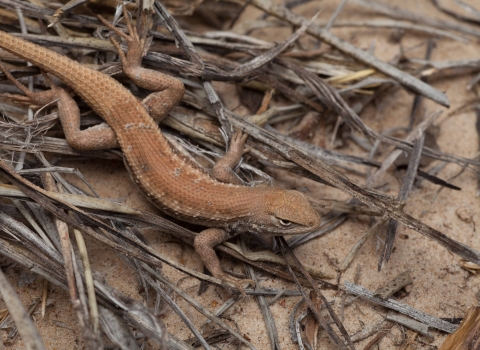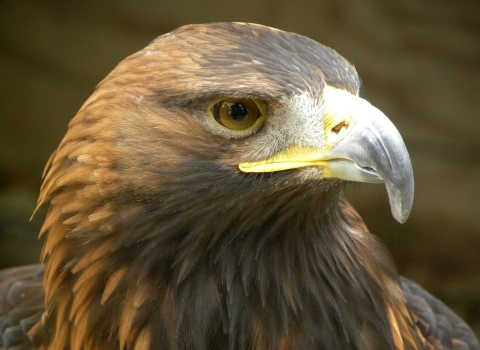Once found in the Arkansas River basin throughout Colorado, Kansas, New Mexico, Oklahoma and Texas, the peppered chub is now found in only one river that runs through northeastern New Mexico and the panhandle of Texas.
The U.S. Fish and Wildlife Service recently completed a Species Status Assessment for the peppered chub. Based on a review of the best available scientific information, the Service is proposing to protect the peppered chub as an endangered species under the Endangered Species Act (ESA) due to its significant decline. The Service is also proposing to designate 1,068 river miles in Kansas, New Mexico, Oklahoma and Texas as critical habitat that will be essential to the conservation of the species.
“To recover peppered chub, we need to address the essential physical and biological features the species needs to increase its populations, such as adequate streamflow throughout its life cycle,” said Amy Lueders, Service Regional Director. “But more than just this fish species stands to gain from improving water flow and water quality conditions that the peppered chub requires to thrive. People and communities will benefit from a more robust fishery with improved recreational opportunities, cleaner drinking water with lower treatment costs and a more resilient ecosystem.”
The peppered chub is a freshwater fish that grows up to three inches long and lives approximately two years. Today, the peppered chub is found in only about six percent of its historical range. The chub requires unobstructed river segments greater than 127 river miles and flowing water with adequate depths to support all of its life stages. River fragmentation and alterations of the natural flow regime, largely due to water diversions and impoundments, and degradation of water quality within its range are the primary stressors affecting the species.
Proposed critical habitat for the peppered chub includes areas that are particularly important for the conservation of the species. The proposed designation requires federal agencies to consult with the Service if they are conducting, funding or permitting activities that may adversely affect the chub’s recovery or its habitat. Designation of critical habitat does not affect land ownership nor does it establish a refuge or preserve, and it has no impact on private landowners taking actions on their land that do not require federal funding or permits.
To conserve the peppered chub, the Service is coordinating with partners including the Canadian River Municipal Water Authority on continued efforts to control invasive, nonnative vegetation and to maintain adequate flows within the chub’s range. Working with the state of Kansas, Service biologists are exploring the idea of captive propagation and fish passage fish passage
Fish passage is the ability of fish or other aquatic species to move freely throughout their life to find food, reproduce, and complete their natural migration cycles. Millions of barriers to fish passage across the country are fragmenting habitat and leading to species declines. The U.S. Fish and Wildlife Service's National Fish Passage Program is working to reconnect watersheds to benefit both wildlife and people.
Learn more about fish passage restoration for the chub that could contribute to the species’ recovery.
The proposal to list the peppered chub as endangered and designate critical habitat will publish in the Federal Register on Dec. 1, 2020, and public comments will be accepted until Feb. 1, 2021. We encourage the public, academia, federal and state agencies, industry and other stakeholders to review the proposal and provide comments. A final decision to list or withdraw the proposal is typically made within a year after the proposal.
America’s fish, wildlife and plant resources belong to all citizens, and ensuring the health of imperiled species and their habitats is a shared responsibility. The Service is working to actively engage conservation partners and the public in the search for improved and innovative ways to conserve and recover imperiled species and the ecosystems upon which they depend.
The U.S. Fish and Wildlife Service works with others to conserve, protect, and enhance fish, wildlife, plants, and their habitats for the continuing benefit of the American people. For more information on our work and the people who make it happen, visit http://www.fws.gov/. Connect with our Facebook page, follow our tweets, watch our YouTube Channel and download photos from our Flickr page.


